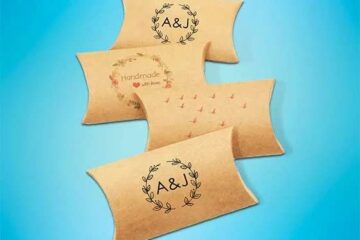Navigating the world of diapers can be daunting for new parents. With countless options available, finding the perfect fit for your baby involves a lot of trial and error. This parent’s guide aims to simplify the process, offering insights into various types of diapers, factors to consider when choosing, and tips to ensure your baby stays comfortable and happy.
Understanding Different Types of Diapers
The first step in this parent’s guide is understanding the various types of diapers available on the market. Each type has its own benefits and drawbacks, so knowing the differences can help you make an informed decision.
Disposable diapers are the most popular choice due to their convenience. They are designed for single use and are easy to change, making them ideal for busy parents. These diapers are highly absorbent and come in various sizes to accommodate your baby’s growth. However, they can be expensive in the long run and are not the most environmentally friendly option.
Cloth diapers are a reusable and eco-friendly alternative to disposable ones. They come in different styles, such as prefold, fitted, and all-in-one. Cloth diapers require washing after each use, which can be time-consuming, but they are cost-effective over time. They also offer better breathability, reducing the risk of diaper rash.
Hybrid diapers combine the convenience of disposable diapers with the eco-friendliness of cloth diapers. They have a reusable outer shell and a disposable insert. This design allows for easy changes while minimizing environmental impact. Hybrids can be a great middle-ground option for parents looking for both convenience and sustainability.
Biodegradable diapers are made from natural, compostable materials, making them a more sustainable choice than traditional disposables. They break down more quickly in landfills, reducing environmental impact. However, they can be more expensive and may not be as widely available.
Key Factors to Consider When Choosing Diapers
This parent’s guide emphasizes several factors to consider when selecting the best diapers for your baby. Understanding these aspects can help ensure your baby’s comfort and reduce the likelihood of skin issues.
Absorbency is one of the most crucial factors. A diaper should be able to hold enough liquid to keep your baby dry for several hours. Look for diapers with multiple layers and moisture-wicking properties to prevent leaks and diaper rash.
Fit and comfort are essential for your baby’s comfort. Diapers that are too tight can cause irritation and restrict movement, while those that are too loose can lead to leaks. Choose a size that fits snugly around your baby’s waist and legs without leaving marks.
Babies have delicate skin that can be easily irritated. Opt for diapers that are free from harsh chemicals, fragrances, and dyes. For babies with particularly sensitive skin, hypoallergenic diapers can help prevent rashes and discomfort.
Consider how easy the diapers are to put on and take off. Features like stretchy waistbands, adjustable tabs, and wetness indicators can make diaper changes quicker and more efficient, especially during the night.
If sustainability is a priority for you, look for eco-friendly options. Cloth, hybrid, and biodegradable diapers offer various levels of environmental impact reduction. Choosing diapers made from sustainable materials can help lessen your carbon footprint.
Managing Diaper-Free Time
Diaper-free time is essential for your baby’s skin health. Allowing your baby to go without a diaper for short periods can prevent diaper rash and give their skin a chance to breathe. During these times, having the right products is crucial.
Using organic baby clothes for diaper free time ensures your baby’s skin is protected without the irritation that synthetic materials can cause. Organic fabrics are breathable and gentle, reducing the risk of skin issues. Look for soft, absorbent materials that can handle minor accidents while keeping your baby comfortable.
Additionally, creating a clean, safe space for diaper-free time is important. Lay down a waterproof mat or soft blanket to protect your flooring and make cleanup easier. Supervise your baby closely during these periods to ensure they don’t get too cold or uncomfortable.
Tips for Successful Diaper Changes
Diaper changing can become a smoother and more pleasant experience with the right approach and tools. As you become accustomed to your routine, these tips can help ensure your baby remains comfortable and you stay stress-free.
Be Prepared: Always have your diaper changing supplies within reach. This includes diapers, wipes, a changing pad, diaper rash cream, and a fresh set of clothes in case of any messes. Being prepared prevents you from leaving your baby unattended.
Create a Comfortable Space: Set up a dedicated diaper-changing area that is comfortable for both you and your baby. A padded changing table or a soft blanket on the floor works well. Ensure the area is clean and free from hazards.
Use Distraction Techniques: Babies can get fussy during diaper changes. Keep a small toy or a mobile above the changing area to keep your baby entertained and distracted. Singing or talking to your baby can also help keep them calm.
Clean Thoroughly: When cleaning your baby, make sure to wipe gently but thoroughly. Pay special attention to skin folds where moisture can get trapped, leading to irritation. Using fragrance-free and alcohol-free wipes can help reduce the risk of irritation.
Apply Diaper Cream: If your baby is prone to diaper rash, applying a thin layer of diaper cream can provide a protective barrier against moisture. Choose creams that are free from harsh chemicals and fragrances.
Ensure Proper Fit: After securing the diaper, check the fit around your baby’s waist and legs. The diaper should be snug but not too tight. Ensuring a proper fit helps prevent leaks and keeps your baby comfortable.
Stay Calm and Patient: Diaper changes can sometimes be challenging, especially if your baby is fussy. Staying calm and patient can make the process smoother. Your baby can sense your emotions, so a relaxed demeanor can help keep them calm.
Diapering on the Go
When you’re out and about, diapering can present unique challenges. However, with some preparation, you can handle diaper changes smoothly, even when you’re away from home.
Pack a Diaper Bag: A well-stocked diaper bag is essential. Include diapers, wipes, a portable changing pad, diaper cream, hand sanitizer, and a change of clothes. Having everything in one place makes diaper changes more manageable.
Choose Convenient Locations: Look for designated changing stations in public places. Many restrooms have changing tables that provide a clean and safe space for diaper changes. If one isn’t available, the back seat of your car or a quiet corner with a portable changing pad can work.
Be Efficient: When changing diapers on the go, efficiency is key. Use disposable changing pads to keep surfaces clean and make the process quick. Dispose of used diapers properly and clean your hands thoroughly with sanitizer.
Stay Organized: Keep your diaper bag organized with everything in its place. This helps you find what you need quickly and makes the process less stressful for both you and your baby.
Finding the Right Balance
Finding the right diaper for your baby is an ongoing process that requires attention to your baby’s changing needs. As your baby grows, their diaper requirements may change. By staying informed and adapting as needed, you can ensure your baby remains comfortable and happy.
Monitoring your baby’s skin for any signs of irritation or discomfort can help you make necessary adjustments. If a particular brand or type of diaper isn’t working, don’t hesitate to try something new. The comfort and well-being of your baby are the most important considerations.
Balancing convenience, cost, and environmental impact can be challenging, but with careful consideration, you can find a solution that works for your family. Whether you choose disposable, cloth, hybrid, or biodegradable diapers, the key is to stay flexible and open to change.
This parent’s guide aims to simplify the process of choosing the best diapers for your baby. By understanding the different types of diapers, considering key factors, managing diaper-free time effectively, and following tips for successful diaper changes, you can navigate the diaper dilemma with confidence and ease. Your baby’s comfort and happiness are worth the effort, and with the right approach, you can ensure they stay dry, healthy, and content.



0 Comments